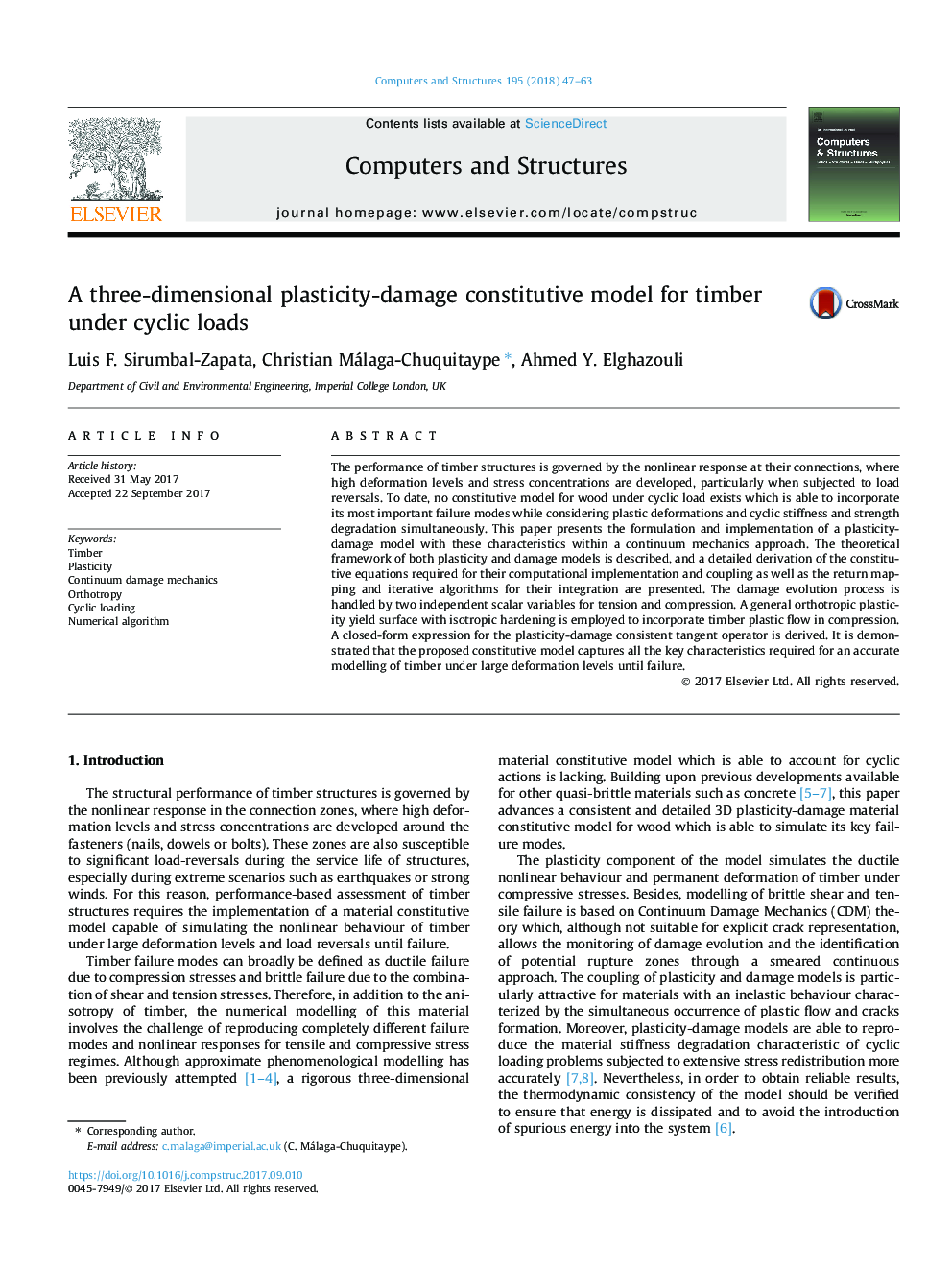| Article ID | Journal | Published Year | Pages | File Type |
|---|---|---|---|---|
| 6924271 | Computers & Structures | 2018 | 17 Pages |
Abstract
The performance of timber structures is governed by the nonlinear response at their connections, where high deformation levels and stress concentrations are developed, particularly when subjected to load reversals. To date, no constitutive model for wood under cyclic load exists which is able to incorporate its most important failure modes while considering plastic deformations and cyclic stiffness and strength degradation simultaneously. This paper presents the formulation and implementation of a plasticity-damage model with these characteristics within a continuum mechanics approach. The theoretical framework of both plasticity and damage models is described, and a detailed derivation of the constitutive equations required for their computational implementation and coupling as well as the return mapping and iterative algorithms for their integration are presented. The damage evolution process is handled by two independent scalar variables for tension and compression. A general orthotropic plasticity yield surface with isotropic hardening is employed to incorporate timber plastic flow in compression. A closed-form expression for the plasticity-damage consistent tangent operator is derived. It is demonstrated that the proposed constitutive model captures all the key characteristics required for an accurate modelling of timber under large deformation levels until failure.
Related Topics
Physical Sciences and Engineering
Computer Science
Computer Science Applications
Authors
Luis F. Sirumbal-Zapata, Christian Málaga-Chuquitaype, Ahmed Y. Elghazouli,
